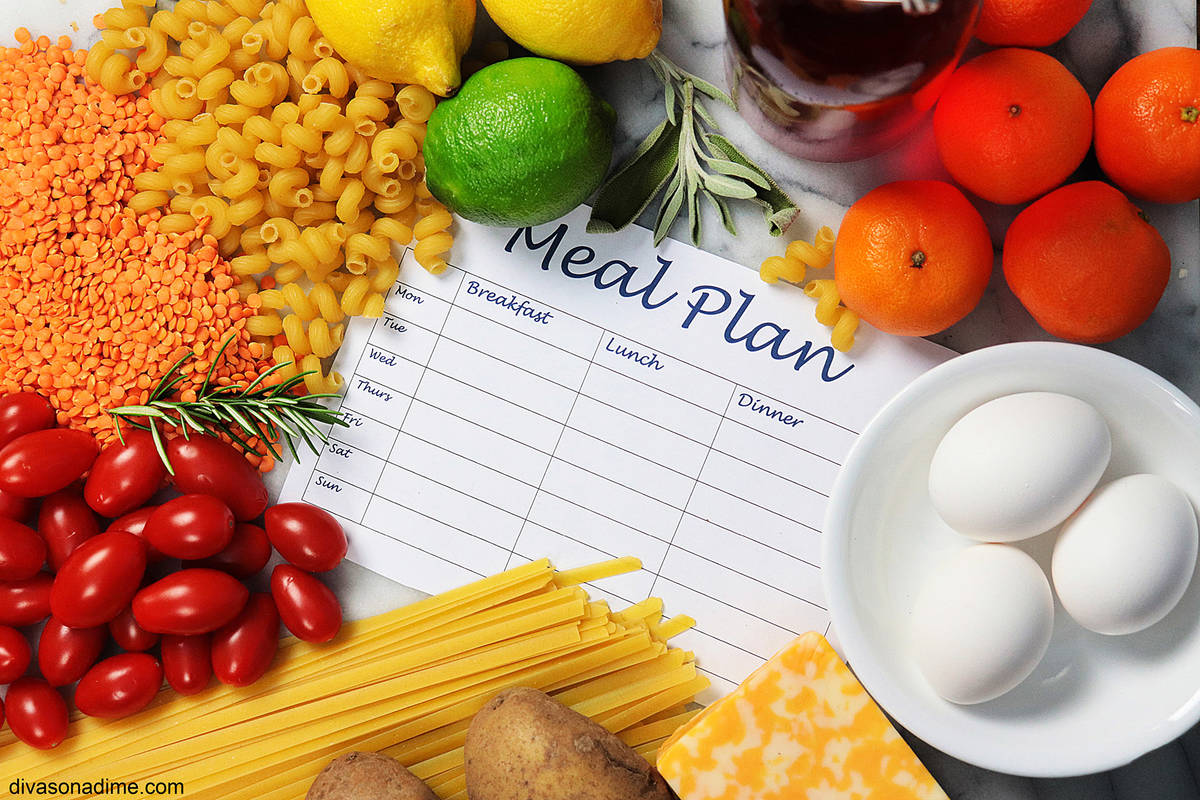Meal planning saves money, time, sanity
In the spirit of new year, new habits, I’m going back to basics. We’re going to talk about the most important tool you have for saving money, improving health and optimizing your time: meal planning.
There are few monthly expenses we can control by our actions, basically food and utilities. Right now, we’re going to get control of your grocery budget and intentionally reduce it.
To begin, you need to know how much you’re currently spending and set a goal to reduce that number. Look through bank statements and receipts for the past three month’s food expense, (acknowledge we spend more during the holidays so adjust for that); add that up and divide by three to get a monthly average. Then divide that by four to get your weekly average. This is your starting number.
Ideally, you want to reduce this by 25 percent in the upcoming months. Consider this, if you reduce your spending by only $20 a week, you’ll have saved more than $1,000 by the end of 2021.
Meal planning starts by “shopping” your pantry, refrigerator and freezer. Make a list of items you have and what needs to be used soon and jot down ideas for meals using these ingredients. Many people can feed their family from what’s already in the house for several weeks with minimal additional expense.
If you’re able to do this, reserve the grocery money you would have spent to start a savings exclusively for grocery spending. Use that money to stockpile frequently used items when they’re really on sale — for example case sales.
Next, gather this week’s grocery store ads and repeat this mantra: “When you’re on a tight budget, you don’t choose the food, the food chooses you.” On the front page you’ll find the loss leaders. Those are the items priced below the profit point designed to lure you in the door so you’ll buy your necessities at full price. If you see something good, I shamelessly suggest, cherry pick those items, then go to the store with the lowest prices for the bulk of your shopping.
In the ad there will always be fresh meat or poultry on sale for less than $3 a pound and usually something under $1 a pound (like whole chicken or pork roast). Make note of good prices on store-brand dairy, (eggs, cheese, yogurt) plant-based foods, (beans, legumes, grains) vegetables and fruits. Those are the selections for building your meal plan this week.
Now, create a weekly meal plan. Keep it simple. Don’t think you have to make a big production of every meal, but plan for healthy eating, whatever that means to you. Start with dinners. Select your inexpensive main components (like chicken breast, hamburger or lentils), put them on the grocery list and assign them a day. Decide what you’re making, add ingredients required and side dishes to the list.
Here’s an example. Tuesday: Baked chicken breast with steamed broccoli and brown rice. Wednesday: Spaghetti with salad and garlic bread.
Now, we do lunch. Beyond the sandwich, think of leftovers, soups, salads and grain bowls. Lastly, plan for breakfast. For most that’s a rotation of eggs, oatmeal, bagels, cold cereal, pancakes and such. Put a few affordable snacks on the list like popcorn and fruit.
Make certain everything you need is on your grocery list or in your pantry because you’re only shopping once this week, and if it’s not on the list it doesn’t go in the cart.
Bust out your calculator and estimate how much you’re going to spend. Be sure it fits within your budget. If not, make changes before you go to the store. To ensure you stick to the plan, leave the cards at home and bring cash.
One last thought: the first few weeks are hardest, then it gets much easier. With your list, shopping will be a breeze and you won’t have to waste time thinking “what’s for dinner?” for at least a week.
Lifestyle expert Patti Diamond is a recipe developer and food writer of the website “Divas On A Dime – Where Frugal, Meets Fabulous!” Visit Patti at www.divasonadime.com and join the conversation on Facebook at DivasOnADimeDotCom. Email Patti at divapatti@divasonadime.com.








